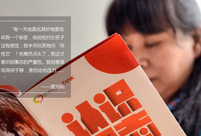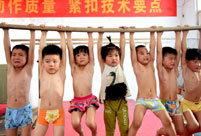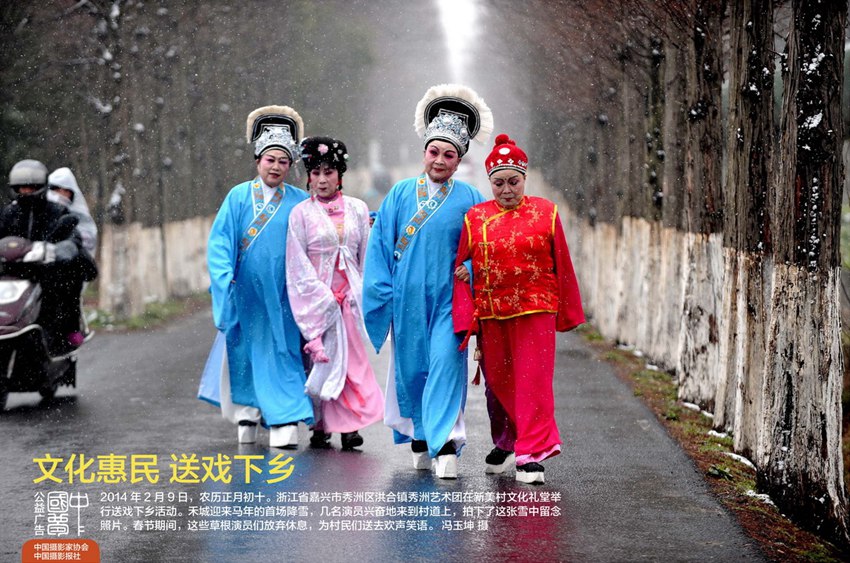 Happy life in Xinjiang
Happy life in Xinjiang
 2014 China Hainan Int'l Automotive Exhibition kicks off
2014 China Hainan Int'l Automotive Exhibition kicks off
 Collection of 'China Dream' public-spirited ads
Collection of 'China Dream' public-spirited ads
 The silent holy stones
The silent holy stones
 University students take care of giant pandas
University students take care of giant pandas
 Leading lady a true legend
Leading lady a true legend
 China Pan-Asia Stone Expo held in Kunming
China Pan-Asia Stone Expo held in Kunming
 Taiwan woman marries into Kazak family, 100 sheep plus a flat as dowry
Taiwan woman marries into Kazak family, 100 sheep plus a flat as dowry
 College girls take graduation photos under water in Chongqing
College girls take graduation photos under water in Chongqing
 Cartoon: Xi and football
Cartoon: Xi and football
Just a few years ago, the world's three biggest iron ore producers threatened to cut the supply of iron ore to China with the intention to rising prices. But with a market swing from sellers to buyers, they now have to find every way to compete for the Chinese market and lower the costs.
Brazil's mining giant Vale has launched a series of publicity campaigns to woo Chinese customers. Like its Australian counterpart, it has also begun to offer discounts on shipments to China. Prior to this,
Anglo-Australian mining company Rio Tinto and Australian Fortescue Metals Group had increased their discounts on low-grade iron ore.
As well as reducing prices and stepping up public relations activities, the world's three largest iron ore producers have been forced to cut costs in a search for competitive advantage.
According to ABC reports, due to the sharp decline in iron ore prices, the world's largest mining company BHP Billiton may lay off up to 3,000 employees in Australia. These are not the company's first job cuts: 500 employees have been cut in recent months including 100 at its headquarters Perth.
Market power is undergoing a rapid swing from sellers to buyers and competition between iron ores is intensifying, insiders said.
It is understood that due to the increase in global supply and slowing demand growth in China, this year Platts 62 percent iron ore index dropped from 134.50 US dollars per ton at the beginning of the year to 95.28, a decline of more than 30 percent.
The latest statistics from the China Iron and Steel Industry Association show that at the end of June, China's iron ore price index (CIOPI) stood at 326.85 points, down 7.32 points from the previous month. The domestic iron ore price index was 286.14 points, down 20.12 points, while the imported iron ore price index was 345.28 points, down 1.52 points
As a downstream industry, the steel sector's market situation is not favorable. From January to May, 26 of the nation's 88 key large and medium steel mills suffered losses amounting to 8.9 billion yuan. In addition, with the gradual tightening of bank lending the steel industry is finding increasing difficulty in obtaining long-term loans, and the risk that capital strands might break has increased.
"Because of this mills have adjusted their strategy, and their purchases have become very cautious."
Iron ore prices will continue to fall, perhaps to below 80 U.S. dollars, said Xu Xiangchun, consulting director of maysteel.com. From the current situation, the global supply of iron ore will further increase. At the same time, the market situation of the worlds' largest consumer, China, continues to deteriorate. For the three iron ore producers, the Chinese market has become their only resort and competition will become more intense.
The article is edited and translated from《三大礦山“勒緊褲帶”奪利中國市場》, source: People.cn, author: Yang Ye
 Moms on their kid’s coming out
Moms on their kid’s coming out Chinese fighters through lens
Chinese fighters through lens
 Children attend gymnastics training in summer
Children attend gymnastics training in summer
 Beautiful sceneries along the special travel route in Xinjiang
Beautiful sceneries along the special travel route in Xinjiang
 Beauty SWAT member in Xinjiang sparks online frenzy
Beauty SWAT member in Xinjiang sparks online frenzy
 Germany beat Argentina 1-0 to win World Cup
Germany beat Argentina 1-0 to win World Cup
 National fitness team members integrate traditional and modern beauty
National fitness team members integrate traditional and modern beauty Collection of 'China Dream' public-spirited ads
Collection of 'China Dream' public-spirited ads  How Chinese men kill the time when their wives practice square dancing?
How Chinese men kill the time when their wives practice square dancing? China's largest 3D printer builds 2-meter-long boat
China's largest 3D printer builds 2-meter-long boat
 One-legged women with high heel goes viral on Internet
One-legged women with high heel goes viral on Internet Photos of the Week
(July 6 - July 12)
Photos of the Week
(July 6 - July 12)
 'Super moon' seen in Beijing
'Super moon' seen in Beijing
 Happy life in Xinjiang
Happy life in Xinjiang
 'Finding Nemo' in Seattle Aquarium
'Finding Nemo' in Seattle AquariumDay|Week|Month